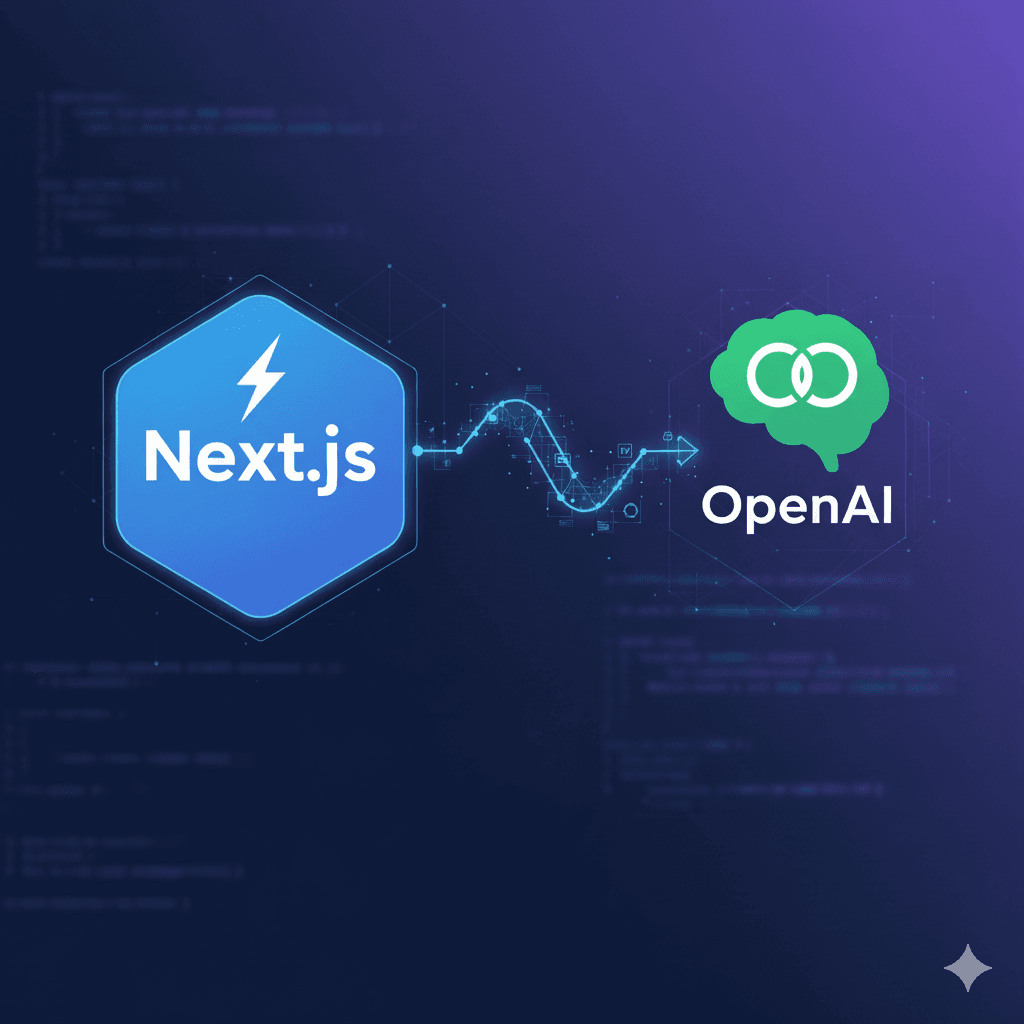Basics of Integrating OpenAI API in Next.js (Step-by-Step Guide)

Artificial Intelligence is no longer a “nice-to-have” – it’s becoming a must-have in modern applications. With tools like OpenAI’s GPT models, you can easily add AI-powered chat, content generation, or assistants into your Next.js apps.
In this guide, I’ll walk you through how to integrate the OpenAI API into a Next.js project and build a simple ChatGPT-like interface. By the end, you’ll have a working chatbot running locally on your machine.
Step 1: Install Dependencies
In your Next.js project, open the terminal and install the official OpenAI SDK:
npm install openai
This package lets you interact with OpenAI’s API without having to worry about low-level HTTP requests.
Step 2: Get Your OpenAI API Key
To connect your app with OpenAI:
- Go to OpenAI API Keys.
- Create a new API key.
- Copy the key somewhere safe. You’ll need it soon.
⚠️ Keep this key secret – never share or expose it in public repos.
Step 3: Setup Environment Variables
Inside your Next.js project root, create a.env.local file and add your key:
👉 Important:OPENAI_API_KEY=your_api_key_here
.env.local should never be committed to GitHub. (Add it to your .gitignore if it’s not already there.)
Step 4: Create an API Route in Next.js
With the App Router (Next.js 13+), you can set up an API route underapp/api/chat/route.ts. This route will handle requests from your chat UI and talk to OpenAI.
import { NextResponse } from "next/server"; import OpenAI from "openai"; const client = new OpenAI({ apiKey: process.env.OPENAI_API_KEY, }); export async function POST(req: Request) { try { const { messages } = await req.json(); const completion = await client.chat.completions.create({ model: "gpt-4o-mini", // or gpt-4o / gpt-3.5-turbo messages, }); return NextResponse.json({ reply: completion.choices[0].message }); } catch (error: any) { return NextResponse.json({ error: error.message }, { status: 500 }); } }
This file does the heavy lifting:
- Accepts chat messages from the frontend.
- Sends them to OpenAI’s API.
- Returns the assistant’s reply.
Step 5: Build a Simple Chat UI
Now let’s create a basic chat page atapp/chat/page.tsx:
"use client"; import { useState } from "react"; export default function ChatPage() { const [messages, setMessages] = useState<{ role: string; content: string }[]>([]); const [input, setInput] = useState(""); const sendMessage = async () => { if (!input.trim()) return; const newMessage = { role: "user", content: input }; setMessages([...messages, newMessage]); setInput(""); const res = await fetch("/api/chat", { method: "POST", headers: { "Content-Type": "application/json" }, body: JSON.stringify({ messages: [...messages, newMessage] }), }); const data = await res.json(); if (data.reply) { setMessages((prev) => [...prev, data.reply]); } }; return ( <div style={{ padding: "20px" }}> <h2>ChatGPT in Next.js</h2> <div style={{ border: "1px solid #ccc", padding: "10px", height: "400px", overflowY: "auto" }}> {messages.map((msg, i) => ( <p key={i}><b>{msg.role}:</b> {msg.content}</p> ))} </div> <div style={{ marginTop: "10px" }}> <input value={input} onChange={(e) => setInput(e.target.value)} style={{ width: "70%", padding: "8px" }} placeholder="Type your message..." /> <button onClick={sendMessage} style={{ padding: "8px 12px", marginLeft: "10px" }}> Send </button> </div> </div> ); }
This UI:
- Displays chat history.
- Lets the user type messages.
- Sends them to your API route and shows AI responses.
Step 6: Run Your App
Start the development server:
npm run dev
Open http://localhost:3000/chat in your browser.
Congrats. You now have a working ChatGPT-like chatbot running in your Next.js project.
What’s Next? (Extend Your App 🚀)
Now that the basics are working, you can level up your chatbot with more features:
- Streaming responses → Show the AI typing in real-time.
- Database storage → Save chat history using Postgres, MongoDB, or SQLite.
- Authentication → Use NextAuth.js to secure chat for logged-in users.
- Custom assistants → Add system prompts to make the bot act like a teacher, coder, or support agent.
Final Thoughts
Integrating OpenAI into Next.js is surprisingly simple. With just a few lines of code, you can create powerful AI-driven features that bring your app to life.
Whether you’re building a chatbot, a writing assistant, or even an AI-powered knowledge base, this setup gives you the foundation to explore endless possibilities.